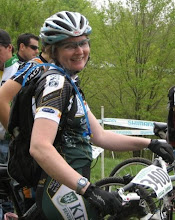I'm not a feeler.
So what. I said this for a long time myself. And I didn't get much better at skiing.
I'm not a feeler, but I seek intrinsic feedback and sensation to ski (hopefully) better.
Just because they are hard to gather, doesn't mean we should leave sensations alone.
What makes a turn "feel" good?
I've spent some time asking instructors and students what they feel this year. I believe that we all feel, but to effectively coach (and self-coach), it's essential to identify where our primary sensations arise and train ourselves to recognize those and other sensations.
Foot feelings: where weight is on the foot along the sole and notice lateral pressure. sense changes in where the pressure is throughout the turn. notice when footbeds are old or socks thicker than usual.
Leg feelings: getting to the 'corner of the boot' and actually know what it means. lighter and firmer pressure against the tongue of the boot. note the bend in their knees or the verticality of femur. sense legs turning independently of upper body without looking down.
Body feelings: notice whole body movements like leaning into the turn and crouching down. speeding up. slowing down.
Ski feelings: describe how the ski bends during a turn, can accurately say when they are actually on edge (rather than when they want to be!), notice chatter, decambering, the ski giving way as it skids. Accurately describe snow sensation - heavy, fluffy, slick.
I'm thinking I hit on something you can identify with in there! Ask yourself to describe sensation in each maneuver or activity and work on describing sensation in the ways that don't come naturally. A few weeks ago, I asked my group what they felt when they skated. The answers were across the board, but none were canned. One instructor honestly said he could feel his foot wiggling around in the boot before he pushed off with that foot.
Seeing as it's spring, I encourage you to develop the ability to isolate and identify sensation during the offseason. Whether you're walking, running, cycling, jumping, doing cross fit or just sitting on the couch. Seriously. Sitting still on the couch, feel your right pinky toe. Without moving it. Where does the sock touch it? Is there pressure from your shoe? Which part of your foot is bearing weight on the coffee table? If you're having trouble, do some different yoga or weight training one day. Where is the pain and tightness the next day? Describe it out loud.
Notice and describe the subtle sensations in everyday life. Then, when December rolls around and your staff trainer is asking what you felt - you'll start with a frame of reference.
So what. I said this for a long time myself. And I didn't get much better at skiing.
I'm not a feeler, but I seek intrinsic feedback and sensation to ski (hopefully) better.
Just because they are hard to gather, doesn't mean we should leave sensations alone.
What makes a turn "feel" good?
I've spent some time asking instructors and students what they feel this year. I believe that we all feel, but to effectively coach (and self-coach), it's essential to identify where our primary sensations arise and train ourselves to recognize those and other sensations.
Foot feelings: where weight is on the foot along the sole and notice lateral pressure. sense changes in where the pressure is throughout the turn. notice when footbeds are old or socks thicker than usual.
Leg feelings: getting to the 'corner of the boot' and actually know what it means. lighter and firmer pressure against the tongue of the boot. note the bend in their knees or the verticality of femur. sense legs turning independently of upper body without looking down.
Body feelings: notice whole body movements like leaning into the turn and crouching down. speeding up. slowing down.
Ski feelings: describe how the ski bends during a turn, can accurately say when they are actually on edge (rather than when they want to be!), notice chatter, decambering, the ski giving way as it skids. Accurately describe snow sensation - heavy, fluffy, slick.
I'm thinking I hit on something you can identify with in there! Ask yourself to describe sensation in each maneuver or activity and work on describing sensation in the ways that don't come naturally. A few weeks ago, I asked my group what they felt when they skated. The answers were across the board, but none were canned. One instructor honestly said he could feel his foot wiggling around in the boot before he pushed off with that foot.
Seeing as it's spring, I encourage you to develop the ability to isolate and identify sensation during the offseason. Whether you're walking, running, cycling, jumping, doing cross fit or just sitting on the couch. Seriously. Sitting still on the couch, feel your right pinky toe. Without moving it. Where does the sock touch it? Is there pressure from your shoe? Which part of your foot is bearing weight on the coffee table? If you're having trouble, do some different yoga or weight training one day. Where is the pain and tightness the next day? Describe it out loud.
Notice and describe the subtle sensations in everyday life. Then, when December rolls around and your staff trainer is asking what you felt - you'll start with a frame of reference.

Comments
Post a Comment